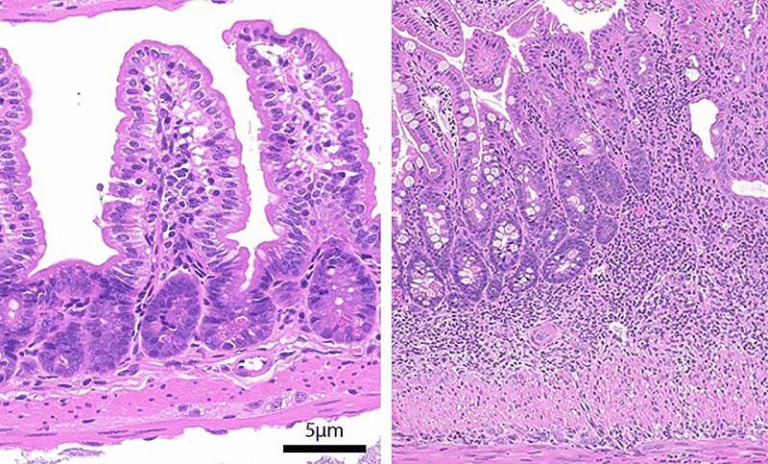New Study Identifies the Three Deadliest Risk Factors for MASLD

Metabolic dysfunction-associated steatotic liver disease (MASLD), formerly known as NAFLD, has rapidly become the most common chronic liver condition worldwide. It affects more than one in three people globally, making it an urgent public health concern. MASLD occurs when excess fat builds up in the liver and is linked to at least one of several cardiometabolic risk factors, including obesity, type 2 diabetes, high blood pressure, high blood sugar, or low HDL cholesterol.
A new study conducted by researchers at Keck Medicine of USC and published in Clinical Gastroenterology and Hepatology shines light on which of these risk factors are the deadliest. Until now, many believed diabetes was the most dangerous condition in relation to MASLD. However, the research team uncovered surprising results: high blood pressure may actually be the biggest driver of mortality risk, even more than diabetes. Alongside high blood pressure, prediabetes or type 2 diabetes and low HDL cholesterol were found to pose the highest threats.
Let’s go step by step and break down exactly what this study revealed, how it was conducted, and what it means for patients and doctors alike.
What Is MASLD?
MASLD, or metabolic dysfunction-associated steatotic liver disease, is a chronic condition where fat accumulates in the liver. It isn’t simply caused by alcohol use, unlike alcoholic fatty liver disease. Instead, MASLD is directly tied to metabolic health issues, also known as cardiometabolic risk factors.
These risk factors include:
- Obesity
- Type 2 diabetes or prediabetes
- High blood pressure
- High blood sugar levels
- Low HDL cholesterol (the so-called “good” cholesterol)
- High triglycerides (though not highlighted in this study as a top risk factor)
MASLD can silently progress for years without symptoms. Left untreated, it can lead to liver inflammation, fibrosis, cirrhosis, and even liver cancer. Beyond liver health, MASLD is also linked to heart and kidney disease, making it a dangerous systemic condition.
Why the Study Was Conducted
Doctors already knew that MASLD patients with cardiometabolic risk factors faced worse outcomes. But they did not know which risk factors made the largest difference in mortality rates.
The Keck Medicine team wanted to answer these key questions:
- Which cardiometabolic factors most strongly increase the risk of death in MASLD patients?
- Does the number of risk factors a patient has matter, or are certain ones more dangerous regardless of combinations?
- How do variables like BMI (body mass index), sex, or race/ethnicity affect outcomes?
By answering these, the researchers hoped to give doctors a clearer roadmap for treatment priorities.
How the Study Was Conducted
The researchers analyzed health data from the National Health and Nutrition Examination Survey (NHANES), a major U.S. dataset collected between 1988 and 2018. They followed patients through mortality data up to 2019.
From a pool of over 134,000 participants aged 20 years or older, they identified 21,872 patients who had MASLD. These participants were diagnosed using the Fatty Liver Index (a non-invasive test combining BMI, waist circumference, and blood markers).
Key participant characteristics:
- Average age: ~50 years
- Gender: ~53% male
- Average BMI: 33.6 kg/m² (which falls into the obese range)
- Median number of cardiometabolic risk factors per patient: 3
The researchers then looked at which risk factors correlated most strongly with all-cause mortality (death from any cause). They used Cox proportional hazards regression models to adjust for age, sex, fibrosis scores, and other health conditions.
The Deadliest Risk Factors Identified
After analyzing decades of data, the study concluded that three risk factors stood out as being the deadliest for people with MASLD:
- High blood pressure
- Increased risk of death by ~39% (adjusted hazard ratio [aHR]: 1.39; 95% CI 1.24–1.55).
- Surprising finding, as it ranked above diabetes, which was long thought to be the worst.
- Prediabetes or Type 2 Diabetes
- Increased risk of death by ~26% (aHR: 1.26; 95% CI 1.16–1.38).
- Still highly dangerous, but not as impactful as high blood pressure.
- Low HDL cholesterol
- Increased risk of death by ~15% (aHR: 1.15; 95% CI 1.05–1.26).
- HDL is often called “good cholesterol” because higher levels are protective.
Interestingly, high triglycerides did not show a significant independent link to higher mortality in MASLD patients in this study.
The Role of Obesity and BMI
Obesity is one of the most common risk factors for MASLD. However, the study showed that the impact of obesity on mortality depends heavily on BMI categories:
- BMI 35–40: ~18% higher mortality risk
- BMI 40–45: ~55% higher mortality risk
- BMI >45: ~64% higher mortality risk
In other words, the heavier the patient, the greater the risk. This shows obesity is not just a “yes/no” factor—severity matters a lot.
Risk Multiplies with Each Added Factor
The study also confirmed that the more cardiometabolic risk factors a patient has, the worse their chances. Specifically, each additional risk factor increased the chance of death by about 15%.
This means someone with MASLD and just one factor may live relatively longer, but someone with four or five overlapping risk factors faces a far higher mortality risk.
Consistency Across Groups
The findings remained consistent regardless of gender, race, or ethnicity. This suggests that the top three risk factors—high blood pressure, glucose intolerance, and low HDL—are universally deadly in MASLD patients.
Why High Blood Pressure Stands Out
One of the most surprising findings is that high blood pressure was a stronger predictor of death than diabetes. This goes against conventional wisdom, since diabetes has long been emphasized as the leading issue in MASLD care.
High blood pressure, however, impacts multiple organs:
- It increases the risk of heart disease (the top cause of death globally).
- It worsens kidney disease outcomes.
- It may accelerate liver fibrosis in MASLD patients.
The researchers suggest doctors may need to prioritize aggressive blood pressure control as much, if not more, than blood sugar management.
Why Low HDL Cholesterol Matters
Cholesterol is often oversimplified into “good” and “bad” types. HDL cholesterol helps transport cholesterol away from arteries and back to the liver for processing. Higher HDL levels are protective against heart disease.
Low HDL means this protective effect is lost. In MASLD patients, this lack of defense may accelerate both cardiovascular problems and liver disease progression.
Broader Context: MASLD as a Global Health Problem
MASLD affects an estimated 25–30% of the global population, and its numbers are rising as obesity, diabetes, and hypertension become more common.
Unlike some liver diseases, MASLD often develops silently. Many patients don’t realize they have it until complications arise. This is why identifying early, deadly risk factors is crucial for prevention.
In the future, researchers hope to explore how genetics, diet, and alcohol consumption influence MASLD outcomes. These additional factors may help create personalized risk profiles for patients.
What Patients and Doctors Can Take Away
- High blood pressure deserves urgent attention in MASLD patients.
- Managing diabetes and prediabetes remains crucial, but blood pressure may need equal or greater focus.
- HDL cholesterol levels should not be ignored—boosting HDL through lifestyle or medications could improve survival.
- Weight management is vital, especially for those with severe obesity.
- Patients with multiple risk factors face the highest mortality and need aggressive, tailored care.
Limitations of the Study
It’s worth noting that the study has limitations:
- It was observational, so it cannot prove causation.
- MASLD diagnosis was based on the Fatty Liver Index, not imaging or biopsy, which could misclassify some patients.
- The study used U.S. data, so results may not perfectly reflect populations in other countries.
- All-cause mortality was the measure, so results include deaths not only from liver disease but also from heart disease, cancer, and other causes.
Still, the study provides one of the most detailed looks yet at which risk factors matter most in MASLD.
Final Thoughts
MASLD is a complicated, widespread disease. This new research highlights that controlling blood pressure, diabetes, and cholesterol are not just optional steps—they can mean the difference between life and death for millions of people.
For doctors, this means re-prioritizing treatment approaches. For patients, it emphasizes that lifestyle changes like improving diet, exercising, losing weight, and monitoring blood pressure and cholesterol levels can make a massive difference.





